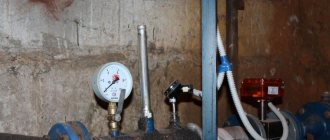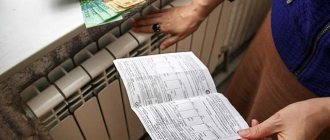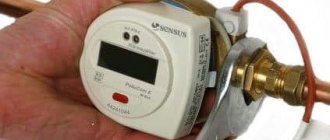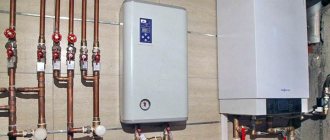The choice of payment method for heat in municipalities on the territory of a constituent entity of the federation is the prerogative of regional authorities. Such a decision is made no more than once a year before October 1.
Moreover, the transition to the new system is made only one year after the corresponding decision is made.
And although the new rules of the game in Krasnoyarsk have been adopted now, in fact, residents will start paying in September 2021.
A new payment mechanism for heat is being introduced not only in Krasnoyarsk, but also in Achinsk, Sharypovo, Sosnovoborsk and Zelenogorsk.
Now residents of three cities actually pay for heating: Borodino, Kansk and Minusinsk, as well as 16 districts of the region: Birilyussky, Bolshemurtinsky, Dzerzhinsky, Ilansky (certain rural settlements), Irbeysky, Kazachinsky, Kansky, Mansky, Motyginsky, Novoselovsky, Pirovsky, Taseevsky , Tyukhtetsky, Sharypovsky, Shushensky, Taimyrsky Dolgano-Nenets.
The total amount in the “Accrued” line for the “Heating” payment type is affected not only by the number of square meters of the room.
Calculation of payments for heating office space or other premises on the balance sheet of legal entities is made either on the basis of installed meters, or on the basis of a formula that determines the load taking into account the amplitude of temperature fluctuations:
Q = room volume × 1.08 × 0.5 × (18°-(-26°)) / 1000000 Gcal/h
Thermal energy consumption during the heating season at an average temperature (-1.9°C):
W = Q × 24 hours × 220 days × (18°-(-1.9°)) / (18°-(-26°))
The temperature regime in offices, garages, hangars, warehouses and production workshops is determined by SanPiN standards.
The following tariffs apply to legal entities in Moscow:
- directly connected to the heating network without intermediate energy conversion points - 1,531.26 excluding VAT
- connected to the network not directly, but through heating points (through points operated by the heating network organization) - 1,932.16 excluding VAT
IPU - individual metering device;
ODPU - a common building (collective) metering device installed in an apartment building;
Residential premises in an apartment building - apartment;
Non-residential premises in an apartment building are various shops, offices, parking spaces, underground garages and parking lots, and so on, located in an apartment building;
Rules - Rules for calculating the amount of payment for utility services, approved by Decree of the Government of the Russian Federation of May 6, 2011 No. 354.
The calculation methods and examples presented below provide an explanation of the calculation of the heating fee for residential premises (apartments) located in apartment buildings with centralized systems for supplying thermal energy .
Elena Shereshovets tells whether the formulas have really changed
Decree of the Government of the Russian Federation dated December 28, 2021 No. 1708 amended the Rules for the provision of utility services and approved new formulas for calculating heating fees.
For houses that are not equipped with communal metering devices, two formulas apply: formula 2(3) for calculating the amount of heating fees evenly throughout the year and formula 2(4) for calculating fees during the heating period.
If a common house meter is installed in the house, the calculation of the amount of the fee will depend on the presence of individual heat meters in the house. If there are no individual devices, the calculation is made according to formula 3, it is rewritten in a new form.
If the premises are partially equipped with individual metering devices, formula 3(1) works; this is a new formula. When all premises are equipped with IPU, the calculation is carried out according to formula 3(3), which is rewritten.
Here's what it looks like in diagram form:
At first glance, it seems that the formulas have changed a lot. Elena Shereshovets clarifies that the formulas have changed only for apartment buildings where there are premises that have abandoned centralized heating and switched to individual heat sources or where there are premises that are not common property. In principle, these rooms are not provided with heating devices.
For houses where there are no such premises, everything remains unchanged. Let's look at examples.
Why did the Constitutional Court of the Russian Federation demand a review of the heating billing system?
Zone I – within the Third Transport Ring, zone II – the remaining territories of the city of Moscow. The fraction is given as follows: Zone I/Zone II. Based on the definition, 1 calorie of heat (energy) is required to heat 1 gram of water by 1 degree Celsius. Therefore, heating one ton of water (1 million grams) by 1 degree will require 1 million calories or 1 megacalorie (Mcal).
You also need to understand the role of heat consumption standards. Heating accrual according to the standard occurs only if no meters are installed to account for the resource - neither general nor individual. Then the relationship will also be direct: the higher the standard, the more expensive the heat.
Notes: 1. The consumption standard for utility services for wastewater disposal is equal to the sum of the standard for cold water supply and the standard for hot water supply. 2. Standards for the consumption of utility services in categories 16 and 16(1) are also applied to apartment buildings transferred from the category of dormitories, in which the design level of improvement and provision of water taps has been preserved.
On July 1, 2021, new standards for the consumption of utility services for heating came into force, as well as standards for the consumption of utility services for heating when using outbuildings located on a land plot, established by order of the Ministry of Energy of Housing and Communal Services of the Samara Region dated June 20, 2016 No. 131 .
Information on the consumption standards for heating utilities for 12 months is provided for reference. Standards for the consumption of heating utilities for 12 months are determined using the frequency coefficient for consumers to pay for heating utilities equal to 7/12.
During the calculation, it should be remembered that any modern devices have a small error. Mostly they are acceptable. But you need to calculate the error yourself. For example, this can be done using the following formula: R = (V1 - V2) / (V1+V2) * 100, where:
If you have an individual device installed, you will be able to avoid any problems and overpayments. All you need to do is take the readings from the meter every month and multiply the resulting number by the tariff. The amount received must be paid for the use of heating.
Many residents have difficulty converting kilocalories to kilowatts. This is due to many manuals of measuring units in the international system, which is called “C”. When converting kilocalories to kilowatts, the coefficient 850 should be used. That is, 1 kW equals 850 kcal. This calculation is much simpler than others, since it is not difficult to find out the required volume of gigacalories. 1 gigacalorie = 1 million calories.
Calculation No. 3: The amount of payment for heating in residential/non-residential premises, an ODPU is installed in an apartment building, there are no individual meters in all residential/non-residential premises. Read about the procedure and example of calculation →
Important! You should know that there are several schemes for supplying heat to the house and hot water supply. Therefore, before installing metering devices, it is necessary to consult with an independent expert. If the devices are installed incorrectly, then you will not save, but overpay for services.
If in winter the temperature in your apartment is below the specified values, it means that your home receives less heat than required by heating standards. As a rule, in such situations, worn-out city heating networks are to blame, when precious energy is wasted into the air. However, the heating standards in the apartment are not met, and you have the right to complain and demand a recalculation.
- volume of thermal energy according to meter readings;
- the total area of all residential and non-residential premises in the house. Using this parameter, you can calculate the share attributable to each specific apartment of the amount that apartment building residents must pay for heat according to the readings of the general meter.
Interesting: How to return a tax deduction for the purchase of a house and land
-standards for all public services, i.e. their calculations are not consistent with the public regarding the absence of a corruption component, therefore they overestimate all the indicators for entering into the formula for calculating the standard for each service (the area of the premises is underestimated by 150,000 m2, the outside air temperature is overestimated, the duration of heat supply, the thermal load of the premises is overestimated);
It turns out that in reality, prices for heating and hot water supply involve payment not only for the consumed heat and hot water. In addition, residents of houses pay for repairs and maintenance work that must be carried out on the pipeline system. This, in turn, requires costs for equipment, wages for workers, and so on. That is, the final value of tariffs for thermal energy largely depends on the condition of the pipes. You can check this yourself if you know how much 1 Gcal of thermal energy costs in the region.
You also need to understand the role of heat consumption standards. Heating accrual according to the standard occurs only if no meters are installed to account for the resource - neither general nor individual. Then the relationship will also be direct: the higher the standard, the more expensive the heat.
Notes: 1. The consumption standard for utility services for wastewater disposal is equal to the sum of the standard for cold water supply and the standard for hot water supply. 2. Standards for the consumption of utility services in categories 16 and 16(1) are also applied to apartment buildings transferred from the category of dormitories, in which the design level of improvement and provision of water taps has been preserved.
On July 1, 2021, new standards for the consumption of utility services for heating came into force, as well as standards for the consumption of utility services for heating when using outbuildings located on a land plot, established by order of the Ministry of Energy of Housing and Communal Services of the Samara Region dated June 20, 2016 No. 131 .
This is interesting: Saratov benefits for the category of citizens - children of war
Information on the consumption standards for heating utilities for 12 months is provided for reference. Standards for the consumption of heating utilities for 12 months are determined using the frequency coefficient for consumers to pay for heating utilities equal to 7/12.
During the calculation, it should be remembered that any modern devices have a small error. Mostly they are acceptable. But you need to calculate the error yourself. For example, this can be done using the following formula: R = (V1 - V2) / (V1+V2) * 100, where:
If you have an individual device installed, you will be able to avoid any problems and overpayments. All you need to do is take the readings from the meter every month and multiply the resulting number by the tariff. The amount received must be paid for the use of heating.
Important! You should know that there are several schemes for supplying heat to the house and hot water supply. Therefore, before installing metering devices, it is necessary to consult with an independent expert. If the devices are installed incorrectly, then you will not save, but overpay for services.
If in winter the temperature in your apartment is below the specified values, it means that your home receives less heat than required by heating standards. As a rule, in such situations, worn-out city heating networks are to blame, when precious energy is wasted into the air. However, the heating standards in the apartment are not met, and you have the right to complain and demand a recalculation.
The most important of all housing and communal services in our country, undoubtedly, is the heating of residential premises. In this situation, the standard refers to a heuristically determined amount of heat energy necessary to maintain comfortable temperatures in an apartment (or private house).
A house with a metering device is in a more advantageous position - here residents pay only for the heat actually used. Here the bill is issued strictly for gigacalories. In the Russian Federation, its cost differs and ranges from 1.5 thousand rubles to 2.5.
In general, each room in the apartment has its own standard of comfort. For this reason, measurements must be taken in all rooms. The thermometer cannot be hung on external walls - at most it can be located a meter away from them. It is recommended to mount the device 150 cm from the floor in a place where there are no drafts.
So, in particular, boiler houses are required to start operating when the average daily temperature (of course, outside) drops to +8 °C. An important point is that this regime must be maintained for at least 5 days in a row. The heating is turned off no earlier than the average daily temperature rises to the same +8 °C.
Heating tariffs in Krasnoyarsk from January 1, 2021
Valery Petrovich from Yeniseisk complains: the monthly heating fee is nine thousand rubles. And Tatyana Nikolaevna Chaban from the village of Pinchuga, Boguchansky district, notes: in her village, heat costs more than 11 thousand rubles per month. At the same time, the woman noted: since July, the cost has increased by 15 percent, while the government decree states that tariffs should increase by no more than 4.6 percent (the inflation rate). – I pay 7,500 – 8,000 rubles for heating, and the charge is 11,500 rubles. 20 percent of the cost of heat is compensated from the budget,” says Tatyana Nikolaevna. – In our village, a coal boiler room has been installed, new boilers have been installed, but heat tariffs are very high. It seems to me that there is a corruption component here. What is included in the payment for heat? To understand this issue, we contacted the Ministry of Tariff Policy and the Ministry of Industry, Energy and Housing and Communal Services of the Krasnoyarsk Territory.
The choice of payment method for heat in municipalities on the territory of a constituent entity of the federation is the prerogative of regional authorities. Such a decision is made no more than once a year before October 1.
Moreover, the transition to the new system is made only one year after the corresponding decision is made.
And although the new rules of the game in Krasnoyarsk have been adopted now, in fact, residents will start paying in September 2021.
A new payment mechanism for heat is being introduced not only in Krasnoyarsk, but also in Achinsk, Sharypovo, Sosnovoborsk and Zelenogorsk.
Now residents of three cities actually pay for heating: Borodino, Kansk and Minusinsk, as well as 16 districts of the region: Birilyussky, Bolshemurtinsky, Dzerzhinsky, Ilansky (certain rural settlements), Irbeysky, Kazachinsky, Kansky, Mansky, Motyginsky, Novoselovsky, Pirovsky, Taseevsky , Tyukhtetsky, Sharypovsky, Shushensky, Taimyrsky Dolgano-Nenets.
The total amount in the “Accrued” line for the “Heating” payment type is affected not only by the number of square meters of the room.
The calculations also take into account heat loss during transportation of the resource; accordingly, payments are affected by the condition and degree of wear of pipes and equipment.
It is the need to overhaul and modernize the centralized heat supply system that forces regional authorities to increase tariffs.
For residents of apartment buildings, when calculating the payment, the area of not only their own living space is taken into account, but also common spaces, inter-apartment stairwells, the staircases themselves and basements, which are also heated during the heating season.
The following data is used to calculate the accrual:
- gigacalorie consumption standard;
- total area (area of the apartment + area of common premises, divided by the number of apartments in the building);
- duration of the heating season (for example, 7/12);
- heating company tariff.
Official information regarding the standard can be found in the Moscow Government Decree (“On standards for thermal energy consumption…”). The monthly consumption rate is considered to be 0.016 Gcal/sq.m.
For most Moscow apartments, the tariff for houses connected to the heating network not directly, but through heating points, is taken into account. At the beginning of 2021, the tariff amounted to 2199.24 rubles, after the tariff increase, the payment per unit of heat was already 2279.95 rubles.
The tariff for users connected to the heating network directly without intermediate energy conversion points is lower and amounts to 1806.89 rubles if the resource supplier is and 1773.19 rubles if the supplier is Mosenergo.
A similar increase in the tariff for thermal energy occurred in other regions. In St. Petersburg, the cost of one unit increased from 1678.72 to 1745 rubles. In the Samara region, heating prices rose from 1,552.88 to 1,605.98 rubles in the middle of the year. per gigacalorie.
In Tyumen, since the middle of the year, a single supplier of heating services for apartment buildings for the population (UTSK) was selected, and the tariff was 1,610.68 rubles. In Yaroslavl, the increase in prices for utilities also did not exceed 4%, the tariff increased from 1,551 rubles. up to 1615 rub. In the Krasnodar Territory, the tariff increased from 1993.61 rubles/Gcal to 2038.12 rubles/Gcal.
The length of the heating season varies in different regions. In the central region, heating is turned on in October and turned off in April, so 7 months out of 12 living quarters are heated. At the same time, payments for heating in the capital region are made monthly in equal installments.
Receiving payment receipts in the summer months, newly minted Muscovites are often surprised why heating appears in the list of payment types. This is done in order to evenly distribute the financial burden of paying for utilities.
The payment in this case is calculated using the formula:
Heating consumption standards have changed in the Krasnoyarsk Territory
Calculation of payments for heating office space or other premises on the balance sheet of legal entities is made either on the basis of installed meters, or on the basis of a formula that determines the load taking into account the amplitude of temperature fluctuations:
Q = room volume × 1.08 × 0.5 × (18°-(-26°)) / 1000000 Gcal/h
Thermal energy consumption during the heating season at an average temperature (-1.9°C):
W = Q × 24 hours × 220 days × (18°-(-1.9°)) / (18°-(-26°))
The temperature regime in offices, garages, hangars, warehouses and production workshops is determined by SanPiN standards.
The following tariffs apply to legal entities in Moscow:
- directly connected to the heating network without intermediate energy conversion points - 1,531.26 excluding VAT
- connected to the network not directly, but through heating points (through points operated by the heating network organization) - 1,932.16 excluding VAT
IPU - individual metering device;
ODPU - a common building (collective) metering device installed in an apartment building;
Residential premises in an apartment building - apartment;
Non-residential premises in an apartment building are various shops, offices, parking spaces, underground garages and parking lots, and so on, located in an apartment building;
Rules - Rules for calculating the amount of payment for utility services, approved by Decree of the Government of the Russian Federation of May 6, 2011 No. 354.
The calculation methods and examples presented below provide an explanation of the calculation of the heating fee for residential premises (apartments) located in apartment buildings with centralized systems for supplying thermal energy .
Elena Shereshovets tells whether the formulas have really changed
Decree of the Government of the Russian Federation dated December 28, 2021 No. 1708 amended the Rules for the provision of utility services and approved new formulas for calculating heating fees.
For houses that are not equipped with communal metering devices, two formulas apply: formula 2(3) for calculating the amount of heating fees evenly throughout the year and formula 2(4) for calculating fees during the heating period.
If a common house meter is installed in the house, the calculation of the amount of the fee will depend on the presence of individual heat meters in the house. If there are no individual devices, the calculation is made according to formula 3, it is rewritten in a new form.
If the premises are partially equipped with individual metering devices, formula 3(1) works; this is a new formula. When all premises are equipped with IPU, the calculation is carried out according to formula 3(3), which is rewritten.
Here's what it looks like in diagram form:
At first glance, it seems that the formulas have changed a lot. Elena Shereshovets clarifies that the formulas have changed only for apartment buildings where there are premises that have abandoned centralized heating and switched to individual heat sources or where there are premises that are not common property. In principle, these rooms are not provided with heating devices.
For houses where there are no such premises, everything remains unchanged. Let's look at examples.
Why did the Constitutional Court of the Russian Federation demand a review of the heating billing system?
A new payment scheme for heat began to operate in Krasnoyarsk, Achinsk, Sharypovo, Zelenogorsk and Sosnovoborsk from this heating season. Previously, residents in these cities paid for the resource throughout the year either according to approved consumption standards or according to meter readings. The first option (the one with the standards) applied to houses that do not have heat meters installed. At the same time, a payment frequency coefficient was applied to the standard, which “stretched” the payment over all 12 months of the year.
The second option was applied to those houses that are equipped with metering devices. Heat payments were calculated based on average monthly meter readings over an annual period. Each month they presented for payment the amount obtained by dividing by 12 the volume of readings for the entire previous year. Thus, residents paid for heat every month, including in the summer.
Under these schemes, payments were adjusted annually. If there were meters, the difference between how much was accrued and how much the device actually showed was calculated. And if the winter was cold, then at the beginning of the year the bills arrived with amounts greater than usual, and residents paid extra for the heat received last year. If the winter was warm, then everything happened exactly the opposite - the owners were reimbursed for what they had overpaid.
Izhevsk - On establishing standards for thermal energy consumption for heating - Resolution No. 746
ADMINISTRATION OF THE CITY OF IZHEVSK RESOLUTION dated August 10, 2009 No. 746
On establishing standards for thermal energy consumption for heating
In accordance with the Federal Law “On the General Principles of the Organization of Local Self-Government in the Russian Federation”, the Housing Code of the Russian Federation, the Decree of the Government of the Russian Federation dated May 23, 2006. No. 306 “On approval of the rules for establishing and determining standards for the consumption of utility services”, guided by the Charter of the city of Izhevsk, I DECIDE:
1. To calculate the standards for thermal energy consumption for heating in accordance with the Decree of the Government of the Russian Federation dated May 23, 2006. No. 306 calculation method.
2. Approve Recommendations for calculating standards for thermal energy consumption for heating (attached).
3. Recommend that organizations managing apartment buildings or residential buildings (and when choosing other forms of management - homeowners' associations, housing cooperatives or other specialized consumer cooperatives; owners of premises) provide the values of the standards calculated in accordance with the Recommendations specified in paragraph 2 resolutions for approval by the Administration of Izhevsk with supporting documents attached.
4. Establish that in relation to an apartment building or a residential building, the standard for heat energy consumption for heating for which is established in accordance with this resolution, the heating standard established by the resolution of the Administration of Izhevsk dated April 25, 2002 ceases to apply. No. 184 “On additional measures of social protection of the population in connection with the reform of housing and communal services.”
5. The order of the Administration of Izhevsk dated July 13, 2007 is declared invalid. No. 144 “On the organization of work on calculating consumption standards for heating, hot and cold water supply services in accordance with the Decree of the Government of the Russian Federation dated May 23, 2006. No. 306."
6. Publish the resolution in the media.
7. Entrust control over the implementation of the resolution to the Deputy Head of the Izhevsk City Administration - Head of the Housing and Communal Services Department I.V. Marinina.
Head of the Administration of Izhevsk - A.A. Ushakov
Approved by a resolution of the Izhevsk City Administration dated August 10, 2009. No. 746
RECOMMENDATIONS FOR CALCULATING STANDARDS FOR THERMAL ENERGY CONSUMPTION FOR HEATING
I. Calculation of the standard in the presence of non-residential premises in an apartment building
1. Calculation of the standard for thermal energy consumption for heating in an apartment building or residential building is carried out in the absence of metering devices. The monthly standard is equal to 1/12 of the annual standard.
2. The heating standard (Gcal per 1 sq. m per month) is calculated using the formula:
where: Qо – the amount of thermal energy consumed during one heating period by apartment buildings or residential buildings not equipped with metering devices (Gcal/year); Szh – the total area of residential premises of apartment buildings not equipped with thermal energy metering devices, or premises of residential buildings not equipped with thermal energy metering devices.
3. The amount of thermal energy (Gcal/year) required for heating an apartment building or residential building is determined by the formula:
where: qmax is the hourly heat load for heating an apartment building or residential building (kcal/hour); tin – temperature of the internal air of heated residential premises of an apartment building or residential building (degrees C); tsro – average daily outside air temperature during the heating period (degrees C); tpo – design temperature of outside air for heating design purposes (degrees C); nо – duration of the heating period (days per year), characterized by an average daily outside air temperature of 8 degrees. C and below; Qonzh is the consumption of thermal energy for heating non-residential premises that are not the common property of an apartment building.
4. It is recommended to take the following values for calculating the standard:
tin – not lower than +20 degrees. C (Rules for the provision of public services to citizens); tsro = −5.6 degrees. C (SNiP 23-01-99* “Building climatology”); trо = −34 degrees. C calculated outside air temperature for heating design purposes (degrees C) (SNiP 23-01-99* “Building climatology”); no = 222 days. (SNiP 23-01-99* “Building climatology”).
5. The hourly heat load for heating apartment buildings or residential buildings that are not equipped with heat energy metering devices is determined based on the design data of the houses.
In the absence of design data, the hourly heat load is determined from the passports of the houses. 6. In the absence of design and passport data, the hourly heat load is determined by the formula:
where: qud – standardized specific heat energy consumption for heating an apartment building or residential building (kcal per hour per 1 sq. m), provided in Table 1; S – total area of residential and non-residential premises of an apartment building or premises of a residential building (sq. m).
Standardized specific heat energy consumption for heating an apartment building or residential building
Table 1
I. Apartment buildings or residential buildings built before 1999 inclusive
| II. Apartment buildings or residential buildings built after 1999 | |||
| Number of floors | The value of the standardized specific heat energy consumption for heating an apartment building or residential building | Number of floors | The value of the standardized specific heat energy consumption for heating an apartment building or residential building |
| 1 | 151 | 1 | 63 |
| 2 | 140 | 2 | 53 |
| 3–4 | 88 | 3 | 52 |
| 5–9 | 77 | 4–5 | 45 |
| 10 | 74 | 6–7 | 42 |
| 11 | 74 | 8 | 40 |
| 12 | 73 | 9 | 40 |
| 13 | 74 | 10 | 38 |
| 14 | 75 | 11 | 38 |
| 15 | 76 | 12 or more | 37 |
| 16 or more | 78 | ||
II. Calculation of the standard in the absence of design and passport data for the house and the absence of non-residential premises in the apartment building
7. The value of the standard thermal energy consumption for heating a residential building or apartment building that does not have non-residential premises (except for non-residential premises belonging to the common property of the apartment building), or in the case when the calculation of thermal energy consumption for heating the specified non-residential premises is carried out similarly to residential premises , in the absence of design and passport data for the house, is determined according to Table 2.
Standards for thermal energy consumption for heating
table 2
| I. Apartment buildings or residential buildings built before 1999 inclusive | II. Apartment buildings or residential buildings built after 1999 | ||
| Number of floors | Estimated standard value, Gcal/sq.m. per month | Number of floors | Estimated standard value, Gcal/sq.m. per month |
| 1 | 0,032 | 1 | 0,013 |
| 2 | 0,029 | 2 | 0,011 |
| 3–4 | 0,019 | 3 | 0,011 |
| 5–9 | 0,016 | 4–5 | 0,009 |
| 10 | 0,016 | 6–7 | 0,009 |
| 11 | 0,016 | 8 | 0,008 |
| 12 | 0,015 | 9 | 0,008 |
| 13 | 0,016 | 10 | 0,008 |
| 14 | 0,016 | 11 | 0,008 |
| 15 | 0,016 | 12 or more | 0,008 |
| 16 or more | 0,016 | ||
III. Final provisions
8. Organizations managing apartment buildings or residential buildings (and when choosing other forms of management - homeowners' associations, housing cooperatives or other specialized consumer cooperatives; owners of premises) calculate the standard amount of heat energy (in Gcal) for heating 1 sq. m of total living space per month (individually for each building), after which the specified value is entered in the technical passport of the building.
_____________
///Download in doc, pdf format///
Site support
Heating tariffs and standards
Calculation of heat payments using the new method began only at the beginning of this heating season. And in those apartment buildings where there are metering devices, in September the residents were actually not charged anything for heat. This is explained by the fact that the start date of the heating period (September 23) coincided with the period when meter readings were taken. However, the volume of heat consumption was taken into account when readings were taken in October.
It should be added that in the first quarter of 2021, management companies will adjust heating fees. Let's figure out what it is and what it will consist of. During the eight months of this year, the calculation of consumption volumes for houses with metering devices was as follows: the volume of readings for 2021 was divided by 12 and the resulting amount was presented for payment every month, including in the summer. And only in September they began to present “in fact”. Thus, in the first quarter of next year, the management company will take the volumes presented for 8 months (January-August, when payment at 1/12 was still in effect) and 4 months (September-December, when they began to pay “after the fact”) and subtract them from volume of thermal energy consumption determined according to meter readings for 2021.
In other words, we can say: in the first quarter of 2021, the management company will summarize the total by gigacalories - how much was accrued and how much the device showed “in fact.”
Residents of houses without meters in the first quarter of 2021 will also be adjusted and the difference paid earlier will be returned. During the first eight months of the year, residents of such houses received payments with the amount for heating services calculated from the standard, using a payment frequency coefficient that “stretched” the payment over all 12 months of the year. When switching to a payment method only during the heating season from September, residents of houses that are not equipped with metering devices will be charged for heat only based on the standard without applying a periodicity coefficient. In this case, the adjustment determines the difference between the fee determined based on the established standard and the fee that was actually charged to residents for 2021.
This will be the last adjustment for all five cities where the method of payment for utilities has been changed. Then - only payment upon actual or according to standards, depending on the presence or absence of metering devices in the house.
One of the conditions for making a decision to change the usual schemes was the level of equipment of apartment buildings with meters. In all five cities this figure exceeded 50%. Thus, in Krasnoyarsk, as of October 1, 2021, when the decision was made to change the payment method, apartment buildings were 70% equipped with metering devices. In Achinsk this figure was 73%, in Sharypovo - 89%, Zelenogorsk - 70% and Sosnovoborsk - 100%.
Naturally, payment based on actual readings is simpler, clearer and more convenient. They paid for how much they received, and from 2021 there will be no more adjustments, which raised many questions among residents. With most homes equipped with meters, switching to a new method is more than logical.
In addition, payment upon delivery creates an incentive for owners to be more conscious about the resource they consume and to make decisions at a general meeting of residents about the management company carrying out energy-saving measures on the house as part of ongoing repairs. You can control the “overheating” in the house and get the management company to regulate the heat supply.
“We have been paying for heat based on meter readings for several years now. We do not pay for the whole year, but from the second half of September, when the heating is turned on, until May, when the season ends. Of course, this is much more convenient and at the same time less expensive financially. Monthly payments have become lower compared to the period when we did not have meters and paid according to standards. The new scheme is certainly more beneficial for consumers,” said Oksana Denisova, a resident of Kansk. In this city, residents have been able to pay for heat during the heating season for several years now.
The installation of meters is carried out as part of a major overhaul, in particular, a major overhaul of the heating system. If the owners want to install a common house meter before the overhaul begins, then they need to make an appropriate decision at a general meeting, draw up a protocol and contact the management company. In addition, within the framework of the law, owners can install a common building meter through organizations whose networks are connected to the networks of an apartment building and which supply utility resources. In this case, an agreement is concluded defining the terms of payment for the purchase and installation of the meter.
The estimated cost of such work is 200-250 thousand rubles. The actual cost is determined individually and depends on the total area of the apartment building, the number of heat supply system inputs into the building, as well as other technical parameters.
But it is worth considering that not all apartment buildings have the technical ability to install a common building meter. The criteria for the technical feasibility of installing the device are regulated by Order of the Ministry of Construction of Russia No. 485/pr dated August 28, 2020.
The management organization keeps a log of readings from common house metering devices. Any owner of an apartment in an apartment building has the right to control the transmitted readings of the device by contacting the Criminal Code. The management company is obliged to familiarize the resident with information about the testimony within one working day from the date of application.
Moreover, residents also have the right to participate in the process of recording device readings together with representatives of the management company. The readings are transmitted from the 23rd to the 25th of each month.
New procedure for paying for heating in an apartment, what has changed?
At the beginning of 2021, Government Resolution No. 1708 of December 28, 2018 (hereinafter referred to as the Resolution) came into force, introducing adjustments to the procedure for calculating heating fees for residents of apartment buildings. Now, if there is a control center in the house and at least one control center in the apartment in the entire house, the calculation will be made according to the readings of the individual meter. Moreover, this procedure will apply even if other premises do not have heating meters.
Before the Resolution came into force, a different procedure was used for calculating payments for heat resources. Payment was calculated according to IPU readings only when all owners of apartment buildings installed heating meters in their apartments. If at least one person in the entire house did not install a meter, then the payment was calculated according to the standard. This was fundamentally wrong. New rules have changed the situation.
Depending on the situation, the Decree introduced new formulas for calculating payments for heat consumption in apartment buildings:
- When the OPU is not installed.
- When the control unit and apartments in the apartment building are installed, depending on the installation of the control unit:
- do not have a counter at all;
- all apartments are equipped;
- there is in at least one apartment or in the total mass more than half of the total area of all premises (residential and non-residential).
Let us note that in the case where the MKD does not have a PSU, payment for it is calculated according to current consumption standards.
They also introduced a separate calculation of payment for premises in the house classified as non-residential. And here it plays a role whether an individual heat meter is installed or not. Until 2021, in accordance with the current Rules established by Resolution No. 354 dated 05/06/2011, it was not possible to separately calculate the payment for heat spent on heating public areas. Therefore, the new procedure made it possible to change the method of calculating heating fees in apartment buildings and eliminate gaps in legal regulation.
Calculation using new formulas began to be applied from January 1 and management companies must indicate the corresponding amounts in the payment in 2021.
Payments for utility services can be calculated:
- only during the heating season - calculations are made according to the readings of the IPU and depend only on actual consumption;
- throughout the year evenly - based on the results of the heating season, adjustments are made in accordance with the IPU readings.
Aspects of the transition to actual payments for heating
1) All current tariffs are published on the official websites of the committees specifically for each region.
2) Heating tariffs are available on the website of the organization involved in urban heat supply (heating networks). You need to look at your receipt, where your organization will be listed on the list, in order to visit its website and find the necessary information.
3) Payment for heating will also be included in the general utility bill. This is done by the company that made the accrual - the management organization (MA) for servicing your home. You can study the tariffs on the official website.
The rate of heat consumption is taken as the annual average. The start and end dates of the heating season are established by order of the Mayor of Omsk.











